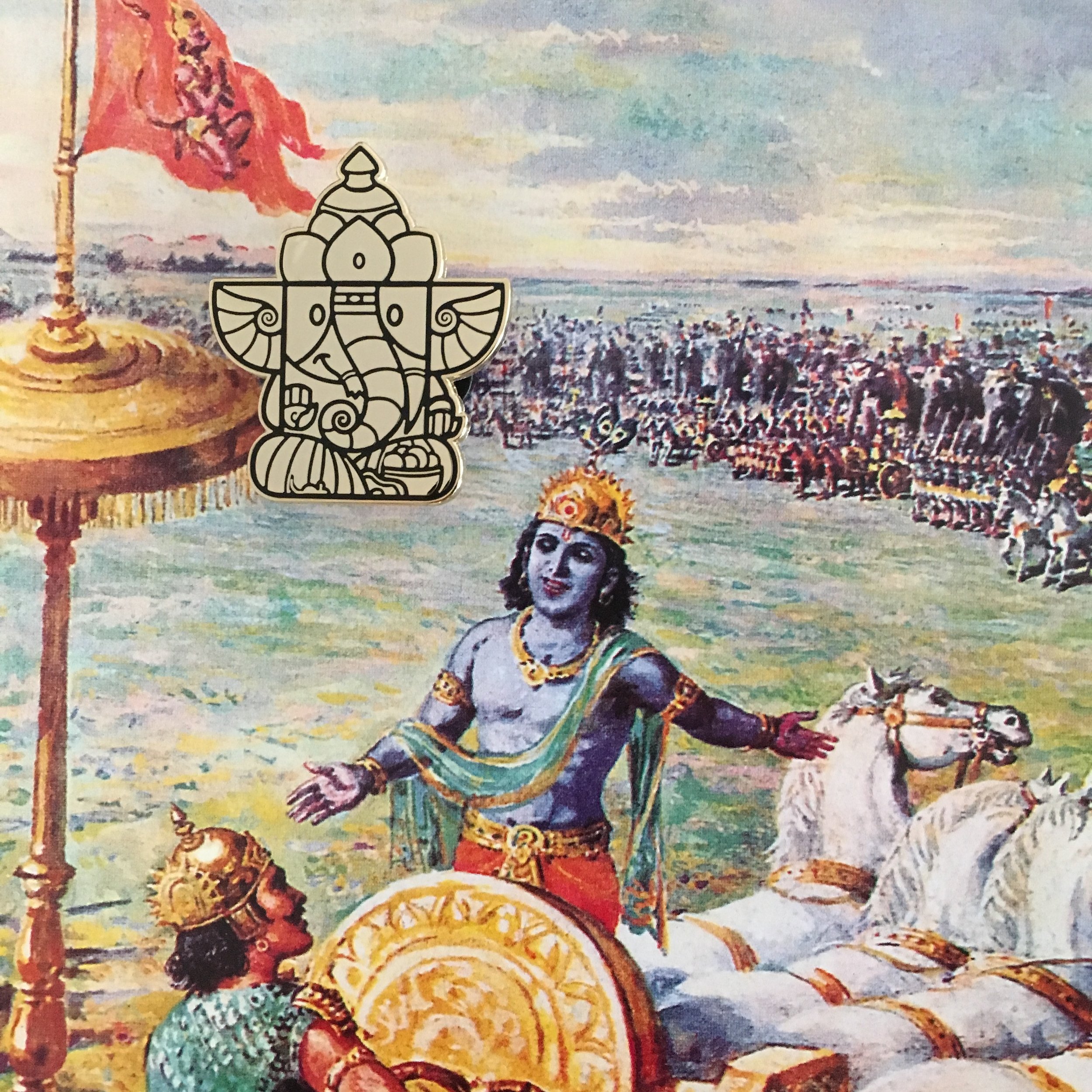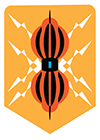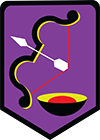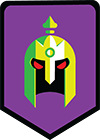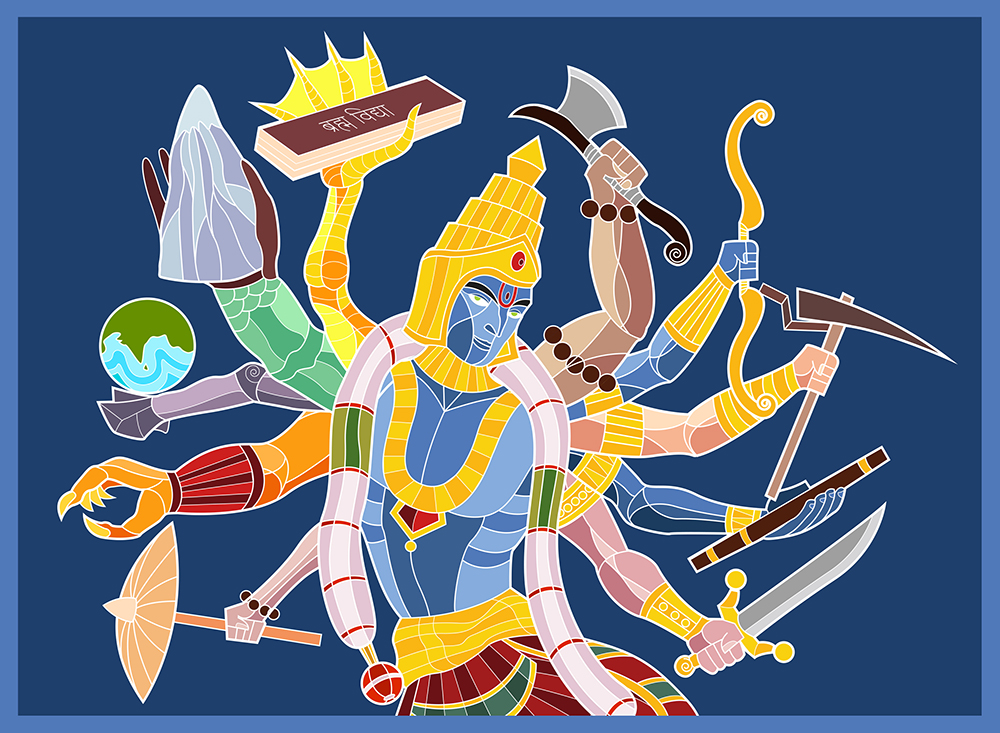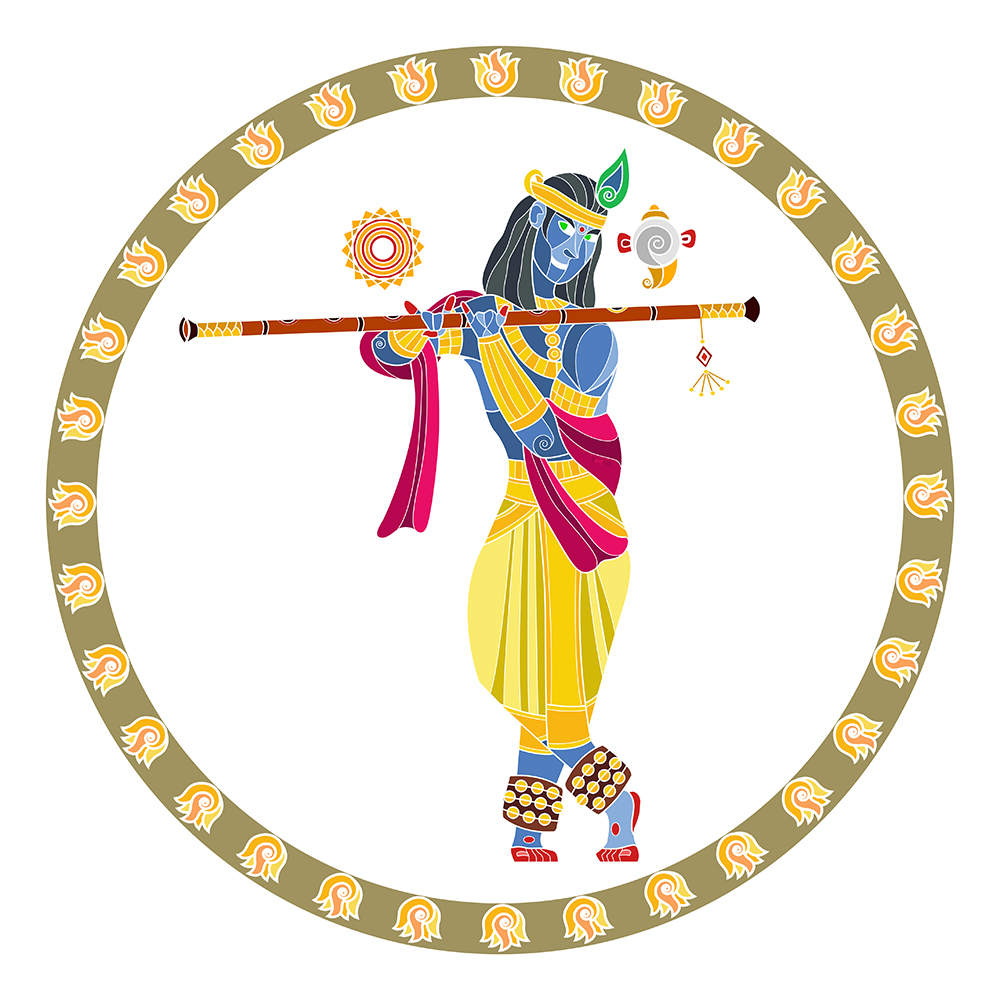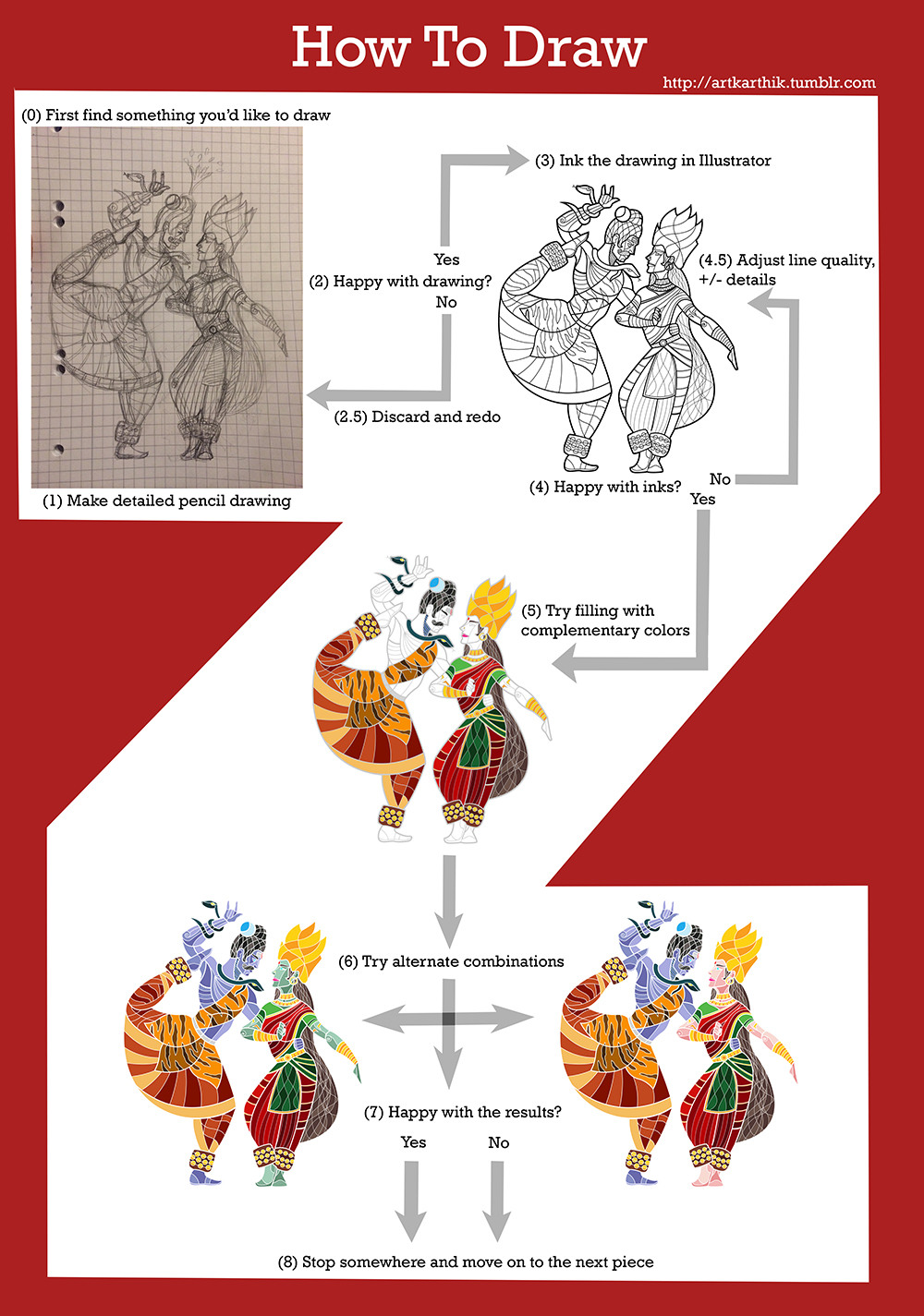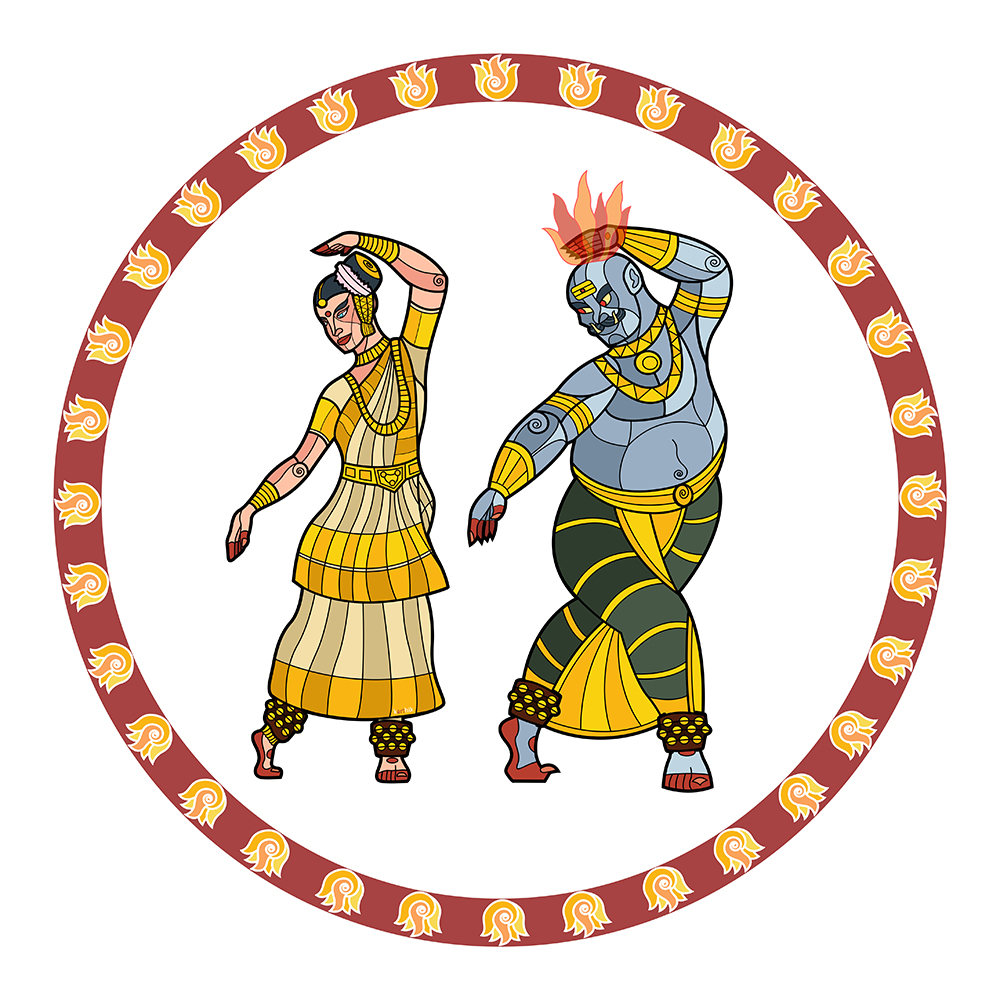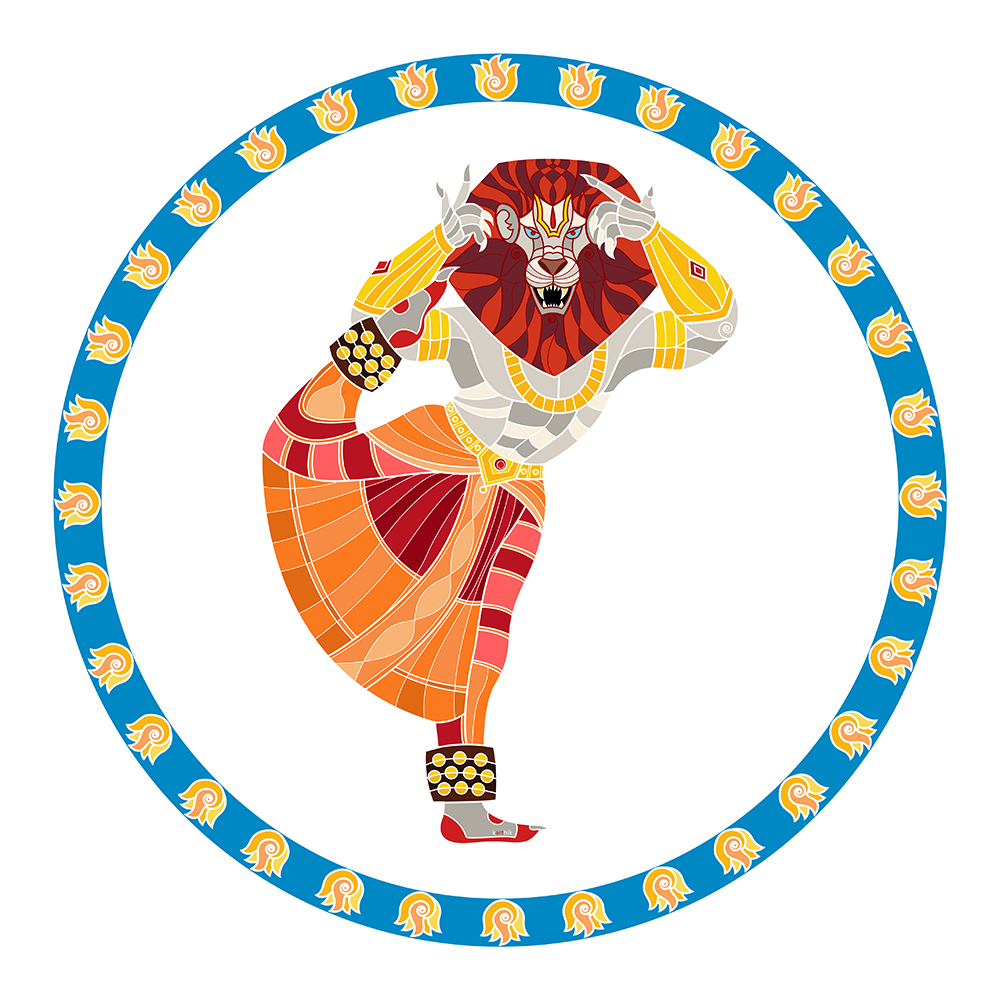The Story
The 13th day of battle between the Pandavas and Kauravas in the epic Mahabharata has just come to an end. While Arjuna was distracted on the far side of the battlefield, the Kaurava forces lured his son Abhimanyu into their Chakravyuha (Wheel-Formation) and brutally killed him. The Pandava forces were unable to follow Abhimanyu into the formation due to the insurmountable defense of the Sindhu King Jayadratha.
Burning with rage, Arjuna makes a terrible promise: To kill Jayadratha before sunset the next day or to kill himself. This sets the stage for the most epic battle of the entire war: The 14th Day.
The Kaurava Commander-in-Chief Dronacharya has assembled his forces into three battle formations. First is the square and solid Shakatavyuha (Cart Phalanx). Behind this is the Padmavyuha (Lotus-Formation), positioning himself at its head. Lastly, near the base of the lotus, he arranges the most powerful Kaurava warriors straight as a needle (Suchivyuha) with the precious Jayadratha at the eye of the needle.
15 Kilometers separate Arjuna from his target: A hundred thousand horsemen, Sixty thousand chariots, three million foot soldiers, fourteen thousand elephants, and then six supreme warriors.
And so begins Arjuna’s glorious and terrible quest. With his golden chariot and four white horses ready, Krishna takes their chariot forward into the enemy’s cart formation. Warriors attack him from all directions but Arjuna has no patience for them. He draws his bow and waves of enemy warriors fall.
Taking apart the cart formation, their chariot storms the edge of the lotus formation, where they encounter Dronacharya. They duel for hours with no end in sight, so Krishna quickly takes their chariot around and avoid further confrontation with the Acharya.
They forge ahead deeper into the lotus formation, encountering Kritavarma, Duryodhana and many other Kaurava warriors. But today, Arjuna appears to be the God of Death incarnate and smashes through the last petals of the lotus formation, breaking it apart entirely.
The powerful warriors of the needle formation surround Arjuna. Bhoorisravas, Karna, Ashwatthama, Kripacharya, Shalya and others attack Arjuna simultaneously.
In the mean time, Dronacharya tries to capture Yudhistira. His efforts are thwarted by Bheema and Satyaki.
Fending off several attacks, Krishna expertly guides Arjuna through the sea of enemy warriors. His eyes are constantly watching the west and Arjuna catches the message that there is little time to waste.
Then suddenly, darkness sets across the battlefield. The enemy warriors start cheering at their victory and let down their guard. Krishna assures Arjuna that this is an illusion and instructs him to act. Arjuna invokes the power bestowed by Shiva and fires a flaming arrow from his bow, beheading Jayadratha in one swift strike.
Before the enemy forces could protest at this treachery, the clouds part and the last rays of the blood-red sun bathe the battlefield.
Arjuna has fulfilled his vow.
The battle however did not stop at sunset as it had on the previous days. Under the blanket of night, the soldiers lit torches and continued fighting. Being of Rakshasa descent, Bheema’s young son Gatotkacha becomes more powerful under the cover of darkness and rains terror upon the enemy forces.
Desperate to curb the violent destruction of their army, the Kaurava warrior Karna invokes his divine Shakti weapon, which he had been saving to use exclusively against Arjuna, and hurls it with all his might at Gatotkacha. Realizing what is about to happen, Gatotkacha grows to an enormous size. The Shakti lights up the night sky and crashes into the giant Gatotkacha. He falls upon the Kaurava army like a mountain and crushes thousands of them underneath.
And so ends the 14th day of the Mahabharata battle.
Philosophy of the Formations
- In direct contrast to the Crescent Moon formation used by the Pandavas on the previous day, the 14th day channels the anger and rage of Arjuna into the laser sharp focus of the Eagle formation as it hunts for its prey, powerfully tearing through all obstacles and challenges in its path and keeping its eye only on its intended target.
In various mythologies, Eagles were often depicted as being very old and wise creatures, such as in the tales of Garuda or in Celtic folktales. They are also strong allies in The Lord of the Rings, rescuing Gandalf from his prison atop Isengard and later coming to the aid of Frodo and Sam when all hope seems lost. Eagle feathers represent courage and bravery in various cultures, where they are used to adorn clothing or headgear. The symbols of the Roman and German empires were both eagles. The eagle is also now prominently featured in the American iconography. - The Kauravas on the other hand, try a combination of three different formations: The Cart, the Lotus and the Needle.
Carts in mythology take many interesting forms. The Gordian knot was a chariot in ancient Greece tied to a post with an impossible knot, which Alexander the great undid by simply cutting through the rope, foretelling his ability to find innovative solutions to complex problems.
The lotus on the other hand, represented the Sun and rebirth in ancient Egyptian cultures, owing to its behavior of closing up at night and almost receding into the water. In buddhism, the lotus represents spiritual awakening, owing to its ability to repel the marshy waters in which it grows and remain clean. In Hindu philosophy, the primordial lotus grows from Vishnu's navel and represents the birth of time and the creation of the universe. Greek mythology had an island of lotus-eaters who would consume a narcotic and remain in a state of apathy to the rest of the world.
And lastly the needle, which has an odd place in mythology. The spinning needle curses a princess to sleep for an eternity when she accidentally pricks herself in the story of Sleeping Beauty. The needle and spinner are also used by Rumplestiltzkin to spin straw into gold for the princess in exchange for her firstborn child.
Taking all of this symbolism into account, we could form an image in our minds of the Kauravas making a desperate promise to protect Jayadratha, trying to throw out seemingly impossible challenges at Arjuna and trying to keep him distracted and away from his true goal.
The Map of the Battlefield

